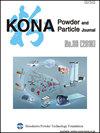Mechanistic Formulation Design of Spray-Dried Powders
IF 3.2
4区 材料科学
Q3 ENGINEERING, CHEMICAL
引用次数: 2
Abstract
Spray drying is gaining traction in the pharmaceutical industry as one of the processing methods of choice for the manufacture of solid dosage forms intended for pulmonary, oral, and parenteral delivery. This process is particularly advantageous because of its ability to produce engineered particles with improved efficacy and stability by combining active pharmaceutical ingredients or biologics with appropriate excipients. Moreover, due to its high throughput, continuous operation, and ability to produce thermostable solid powders, spray drying can be a manufacturing method of choice in the production of drugs and other formulations, including vaccines, for global distribution. Formulation design based on a mechanistic understanding of the different phenomena that occur during the spray drying of powders is complicated and can therefore make the use of available particle formation models difficult for the practitioner. This review aims to provide step-by-step guidance accompanied by critical background information for the successful formulation design of spray-dried microparticles. These include discussion of the tools needed to estimate the surface concentration of each solute during droplet drying, their times and modes of solidification, and the amount of glass stabilizers and shell formers required to produce stable and dispersible powders.喷雾干粉的机理配方设计
喷雾干燥在制药工业中越来越受欢迎,作为制造用于肺、口服和肠外给药的固体剂型的加工方法之一。该工艺特别有利,因为它能够通过将活性药物成分或生物制剂与适当的赋形剂相结合,生产出具有改进功效和稳定性的工程颗粒。此外,由于其高通量、连续操作和生产耐热固体粉末的能力,喷雾干燥可以成为生产药物和其他配方(包括疫苗)的首选制造方法,用于全球分销。基于对粉末喷雾干燥过程中发生的不同现象的机械理解的配方设计是复杂的,因此可能使从业者难以使用可用的颗粒形成模型。本综述旨在为喷雾干燥微颗粒的成功配方设计提供一步一步的指导和关键的背景信息。其中包括讨论在液滴干燥过程中估计每种溶质表面浓度所需的工具,它们的凝固时间和模式,以及生产稳定和可分散的粉末所需的玻璃稳定剂和成壳剂的数量。
本文章由计算机程序翻译,如有差异,请以英文原文为准。
求助全文
约1分钟内获得全文
求助全文
来源期刊

KONA Powder and Particle Journal
工程技术-材料科学:综合
CiteScore
8.40
自引率
4.90%
发文量
35
审稿时长
>12 weeks
期刊介绍:
KONA publishes papers in the broad field of powder science and technology, ranging from fundamental principles to practical applications. Papers describing technological experience and critical reviews of existing knowledge in special areas are also welcome.
 求助内容:
求助内容: 应助结果提醒方式:
应助结果提醒方式:


